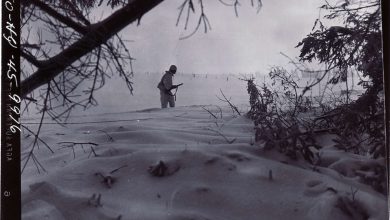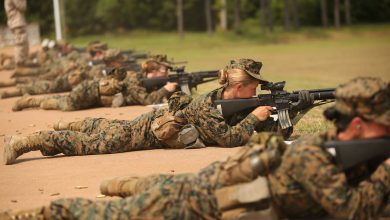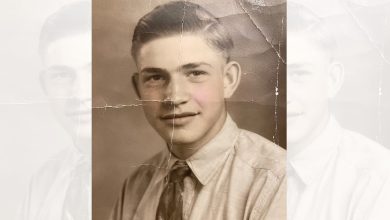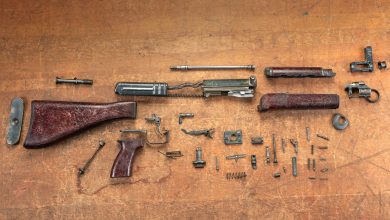Remains of WWII Medal of Honor recipient identified after 80 years

Bianchi was killed on Jan. 9, 1945, after U.S. naval aircraft, unaware that there were prisoners on board, scored a direct hit on the Japanese transport ship (dubbed “hell ships” by American POWs), Enoura Maru, in Takao Harbor. An estimated 431 “unknowns” were killed in the sinking, according to Hegseth.
“During one of the most harrowing chapters of World War II, Willibald Bianchi demonstrated remarkable bravery, valor, and selflessness,” National Medal of Honor Museum President and CEO Chris Cassidy said in a press release. “Eighty years after he was killed, we are grateful for the work of the Defense POW/MIA Accounting Agency to account for Captain Bianchi and finally bring him home. At the National Medal of Honor Museum, his legacy of service and sacrifice will be preserved and shared for generations to come.”
Sent to the Philippines in April 1941 to serve with the 45th Infantry and the Philippine Scouts, the Minnesota native was among the very first Americans to see combat in the Second World War.
On Dec. 7, 1941, the Japanese swept the Philippines, where, retreating into the jungle, Bianchi and his comrades continued their fight against Japanese forces despite a rapidly dwindling supply of food, medicine and ammunition.
Cornered on the island, Bianchi nonetheless volunteered to lead the attack to wipe out enemy machine gun nests in the Tuol River pocket on West Bataan on Feb. 3, 1942.
According to the Department of Defense, Bianchi was shot twice through the left hand but refused to stop for aid — tossing his rifle aside and shooting from his pistol instead. As he rushed toward the Japanese machine gun nest, Bianchi silenced it by tossing grenades.
The danger was not over, however.
Bianchi was shot twice more in the chest, but the indefatigable soldier refused to stop. Clambering aboard a U.S. tank, Bianchi took command of its anti-aircraft machine gun and blasted the second enemy machine gun position. He was subsequently shot again and knocked off the tank. It was only then that Bianchi came to a rest.
The soldier took just one month to recuperate before rejoining his men — this time as a captain.
On April 9, 1942, with no choice but to capitulate, Bianchi, alongside some 9,700 Americans and their 66,300 Filipino allies, surrendered to the Japanese. The already weakened or sick Allied soldiers were forced to trek 60-plus miles with little food or water, enduring what was later termed the Bataan Death March.
“[The] Japanese executed anyone who broke formation or couldn’t keep up and casually butchered others,” according to historian Peter Duffy. “Men were left where they fell, sometimes to be run over by Japanese vehicles. During breaks, most prisoners were forced to sit in the hot sun.”
“The best estimates,” Duffy continued, “suggest that approximately 500 Americans and 2,500 Filipinos died” during the march.
Despite these horrific conditions, Bianchi endured, with many soldiers crediting him with moving through the ranks of desperate men trying to lift their spirits and to get them to walk on.
For the duration of the war, Bianchi survived several harrowing POW camps. At each, according to the Minnesota Medal of Honor website, he took his role as caretaker seriously, bartering with the Japanese for food for his starving soldiers.
“Many servicemen wrote to Bianchi’s mother following the war, telling her that they owed their lives to her son,” according to the site.
Bianchi was transferred from the Bilibid prison in Luzon to the Japanese transport ship Oryoku Maru in December 1944, where it was sunk by American aircraft mere days later. Bianchi survived that sinking before being fatefully transferred to the Enoura Maru, where he, alongside an estimated 300 POWs, was inadvertently killed.
The soldier was posthumously awarded the Medal of Honor by Gen. Douglas MacArthur on June 7, 1945, for his “conspicuous gallantry and intrepidity above and beyond the call of duty” for his actions back in the Philippines.
Today, his remains have been identified as a part of DPAA’s Enoura Maru Project, which aims to identify the remains of over 928 POWs killed aboard the ships Oryoku Maru, Enoura Maru and Brazil Maru.
Now, Bianchi’s name, engraved in stone and overlaid with gold on the Walls of the Missing at the Manila American Cemetery, has a bronze rosette next to it, signifying that, at long last, the captain has been found.
Claire Barrett is the Strategic Operations Editor for Sightline Media and a World War II researcher with an unparalleled affinity for Sir Winston Churchill and Michigan football.
Read the full article here









